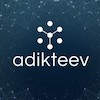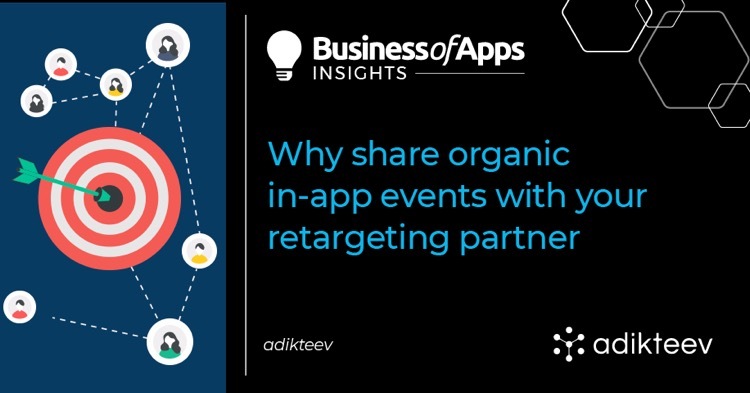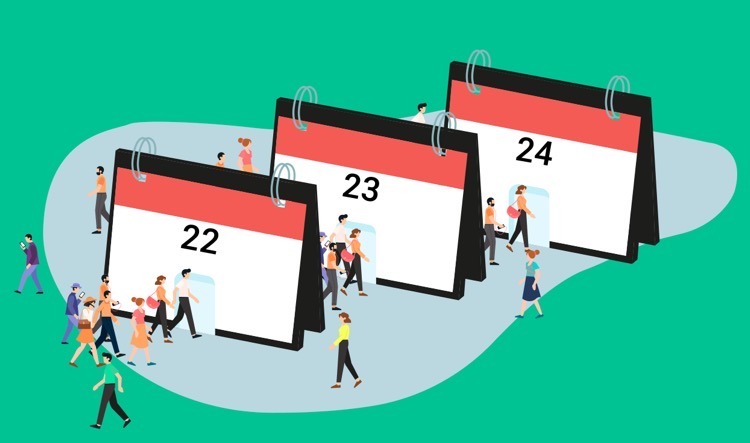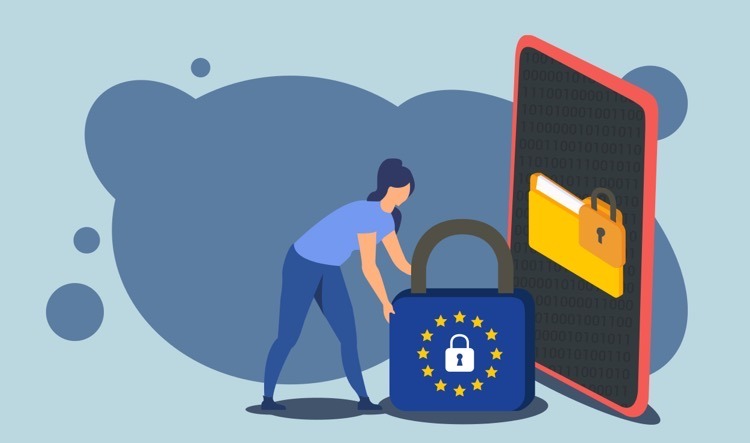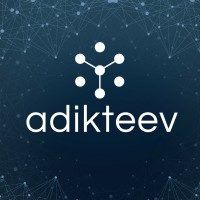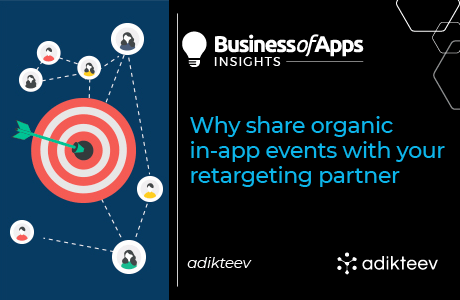Enabling postbacks or sending organic in-app events is an essential part of what makes our retargeting campaigns so successful. While it may seem like a big step for an app publisher to open up their entire user database for retargeting, it’s completely safe and a key part of how we can deliver unmatched retargeting performance.
This article was first published on Adikteev blog.
Some terms, and why share organic data
As an app marketer, you’re probably familiar with the idea of enabling post-backs or sharing organic in-app events. Our internal nomenclature for this is the “data stream” as it includes all organic data and traffic collected by your app. The primary reason we encourage our clients to share their data stream with us is because it allows us to run dynamic cohorts instead of static ones.
Static cohorts are merely lists of users exported from the data stream and shared with your retargeting partner. These are updated internally and shared on an as-needed basis. The problem here is that if a publisher’s lists are out of date, then we may be working with data that’s also out of date. For example, if a client shares a static user list with us that’s a year, a few months or even a few weeks old, we don’t know if the user behavior is still relevant as we’re not able to verify the activity in real time. In this case, retargeting campaigns with out of date user data won’t be nearly as impactful as those run with dynamic cohorts.
On the other hand, dynamic cohorts update in real time, allowing Adikteev to optimize for user behavior instantly. It’s the most efficient way to target users as they are interacting with the app in the current moment, and changes in behavior can be registered as they occur.
An open data stream is also required for our pre-launch analysis and any other side analyses a client might want to execute. At Adikteev, we never want to rush into launching a retargeting campaign without first understanding our customers’ KPIs and the context of their goals. This is why we conduct an in-depth audit of all clients’ app audiences to determine the ideal strategy for their campaigns before we begin our retargeting efforts. In order to do this, our Business Intelligence team must have the most up to date data possible. If something doesn’t seem right and we must check it, or the client wants to run a comeback behavior analysis for example, we can do all of this through the shared data stream.
How to share your data stream and how our data is stored
While it’s a massive amount of data being shared between the app marketer and Adikteev, if you’re working with an MMP the process couldn’t be easier. We have integrations with all major tracking partners, allowing app marketers to link their data stream to our DSP with just a few clicks. We will then receive all in-app behaviors from the time the data stream is open to us.
Our servers are hosted through Amazon Web Services (AWS) through a combination of managed service and in-house frameworks. We keep all raw data on the S3 secure cloud storage from AWS and our in-house platform handles all high-level data.
Firstly, data is received by our platform from app events, and then used to build targeting lists. The bidder architecture searches for the devices on the list and bids on them through RTB. Once the impression is won, the tracking infrastructure is deployed and reporting can be shared.
Why it’s safe to share your data stream with Adikteev
Although we do not have any directly identifying or highly sensitive user data (such as social security numbers, home addresses, or full names), we take all precautions possible to prevent our clients’ user data from getting into the wrong hands. We keep all of our client data siloed from one another, and only employees with the necessary accreditation can have secure and verified access to it.
Because we’re based in the European Union, we’re subject to the strongest data protection standards in the world. This applies to our clients and the clients of our clients (app users). We are proud to be working within an international framework that takes user data as seriously as we do: the European Data Protection authorities can audit our data security protocols at random, and all of our clients’ data and user data is available upon request.
AdTech is changing — it’s time to find out how
AI, privacy shifts, and new monetization models are transforming the app industry. Learn more about these changes and other app marketing insights in the AdTech Trends 2025 Playbook by Yango Ads.
[Download Playbook]At the level of our business relationships, an NDA is in place to provide insurance that clients’ user data cannot be used in any way other than its intended purpose. Not only are we legally prevented from doing so, but it’s not possible for us to use one client’s data to optimize for another’s campaign. Retargeting campaigns require a very specific set of rules that don’t make sense out of context. Also, we have no idea how users perform in a different app context. Because we don’t run UA, there’s no risk of us using this data to optimize for your competitors.
Make the most of your retargeting campaigns
A number of decisions factor into why a publisher may or may not want to share their data stream with their retargeting partner. But for the vast majority it’s the best way forward. In order to offer supplemental analyses and a pre-launch analysis, it’s essential to have access to user data and behavior. Dynamic cohorts are one of the key elements that make our retargeting performance so strong, and access to our clients’ data stream allows us to provide optimizations in real time.


